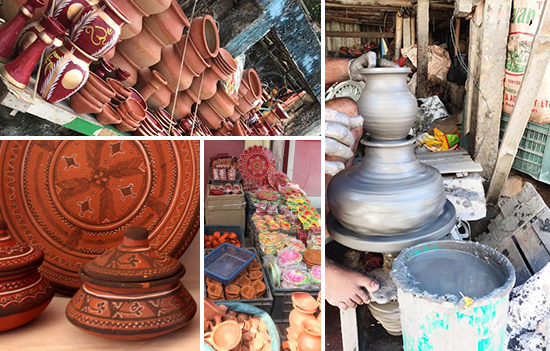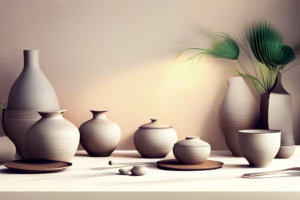Pottery has always been a timeless art form and the use of clay is an integral part of its creation. Aspiring potters and art enthusiasts are often overwhelmed by the wide variety of clay types available. For anyone looking to delve deeper into the world of pottery, demystifying these clays is crucial. In this comprehensive guide, we explore the different types of clay and highlight their unique characteristics and best uses.
1. Clay:
Clay is one of the most readily available and versatile types. It is known for its low baking temperature and is suitable for beginners. Its porous nature makes it ideal for decorative pieces, and its vibrant color after firing adds beauty to the finished product.
2. Clay:
Clay is a durable and popular choice among potters. It is fired at a higher temperature than earthenware, resulting in items that are break-resistant and strong. This type of clay is ideal for making functional objects such as tableware and cups.
3. China clay:
Known for its delicate and translucent appearance, china clay is often considered the pinnacle of clay. It is baked at extremely high temperatures, resulting in elegant and refined creations. Porcelain is ideal for making fine china, delicate sculptures and intricate ornaments.
4. Le Clay:
Raku Clay is unique because it is specially designed for the Raku baking technique. This Japanese method involves removing the pieces from the kiln while they are still red-hot and placing them in flammable materials. Unpredictable results result in stunning, unique pieces, making Le Clay a favorite among experimental potters.
5. Paper Clay:
Paper clay is a fascinating option for those looking for innovation. This type of clay is combined with paper fibers, creating a lightweight and flexible material. Paper clay is ideal for large-scale sculpture, and its malleability allows artists to push the boundaries of traditional pottery forms.
Overall, understanding the different types of clay can help artists choose the right material for their creative vision. Whether you are new to experimenting with pottery or are a seasoned potter creating exquisite porcelain masterpieces, each clay type has unique characteristics that contribute to the richness and diversity of the world of pottery. So roll up your sleeves, get started and start your pottery journey with the perfect clay for your next masterpiece!


